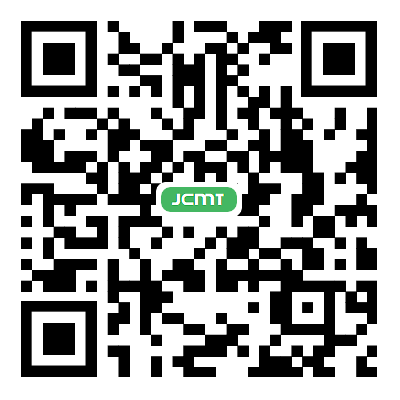Serum TUBB is a potential biomarker for the diagnosis of non-small cell lung cancer
Abstract
Aim: To identify serum biomarkers for non-small cell lung cancer (NSCLC) and assess their potential for early diagnosis.
Experimental: MB-WCX coupled with MALDI-TOF MS was utilized to profile serum samples from 64 NSCLC patients and 64 healthy subjects, followed by ClinProTools software and Liquid chromatography-electrospray ionization-tandem mass spectrometry(LC-ESI-MS/MS) for recognition and characterization of differentially expressed peaks. Enzyme-linked immunosorbent assay (ELISA) confirmed protein concentrations, while The Cancer Genome Atlas (TCGA) database was leveraged for validation of candidate biomarkers in a larger cohort.
Results: 39 distinct proteomic m/z peaks were identified for NSCLC subjects, with five of these peaks significantly distinguishing NSCLC from healthy controls (HC). A model developed using the GA (Genetic Algorithm) with ClinProt data demonstrated a sensitivity of 84.72% and a specificity of 88.68% in identifying NSCLC patients. Peaks 2 through 5 were observed to be downregulated in the NSCLC group. Notably, a peptide peak, Peak 1, with an m/z value of 1,866, identified as a fragment of TUBB, was upregulated in NSCLC. ELISA validated the increased serum TUBB levels in NSCLC patients (P < 0.001). Furthermore, analysis of TUBB expression in lung cancer tissues through TCGA data revealed elevated TUBB expression in lung cancer tissues.
Conclusions: Serum TUBB is identified as a potential diagnostic biomarker for NSCLC, which may benefit early diagnosis and enhance the survival rate of NSCLC patients.
Keywords
INTRODUCTION
Lung cancer (LC) is a leading malignancy and the primary cause of cancer-related deaths in men worldwide, with its mortality rate consistently ranking among the highest. The most significant risk factor for LC development is tobacco use. However, with the introduction of screening guidelines and a reduction in tobacco use, the mortality of LC has decreased. Despite these improvements, lung cancer remained the second most common malignancy and continued to be the primary contributor to cancer-related deaths in 2020. Data from the International Agency for Research on Cancer (IARC) of the World Health Organization indicate that LC accounts for 11.4% of global cancer incidence and 18.0% of cancer-related mortality[1]. Lung cancer (LC) can be classified into two main types: small-cell lung carcinoma (SCLC) and non-small cell lung carcinoma (NSCLC). The incidence rate of NSCLC exceeds that of SCLC, with NSCLC accounting for more than 80% of all lung cancer cases. NSCLC can be further categorized into squamous and non-squamous subtypes[2,3]. Unfortunately, most patients with NSCLC are diagnosed at intermediate and advanced stages, with only a small portion being diagnosed early enough to benefit from surgical treatment[4,5]. Therefore, early diagnosis and timely therapeutic intervention are crucial for enhancing survival outcomes in NSCLC patients.
Biomarkers are measurable biomolecules found in body fluids and tissue samples that can be used to characterize various conditions. They have been widely used in the early diagnosis of diseases. In recent years, the use of predictive biomarkers in molecular targeted therapy has significantly changed the treatment landscape for LC, especially NSCLC[6,7]. These advancements have further highlighted the importance of prognostic and predictive biomarkers. Identifying new biomarkers remains crucial for lung cancer screening, detection, diagnosis, prognosis, prediction, stratification, and monitoring treatment response.
Notably, mass spectrometry (MS)-based proteomics has become a powerful tool in biological research, especially in the identification of disease biomarkers[8,9]. Numerous studies have demonstrated the effectiveness of proteomics in identifying disease biomarkers[10-12]. Furthermore, the collection and subsequent laboratory analysis of blood samples are relatively less complex and more accessible compared to other body fluids. Many reports have shown that some low molecular weight proteins in serum or plasma are associated with pathological conditions, making them potential disease biomarkers[13,14]. In this study, we applied purification techniques using magnetic beads in combination with Matrix-Assisted Laser Desorption/Ionization Time-of-Flight Mass Spectrometry (MALDI-TOF MS) to conduct a comparative serum proteome analysis between individuals with NSCLC and a cohort of healthy subjects. We detected differential expression peaks that serve as emerging diagnostic indicators for early screening and disease outcome prediction by comparing the serum proteome profiles. These peaks were further characterized by LC-ESI-MS/MS. Finally, the protein concentrations in serum were confirmed by enzyme-linked immunosorbent assay (ELISA) [Figure 1]. Well-validated serum biomarkers may present a more effective and reliable diagnostic method for NSCLC.
MATERIALS AND METHODS
Ethics statement
The research protocol received approval from both the Ethics Committee and the Human Research Review Committee at Xi’an Jiaotong University, ensuring compliance with ethical standards and research regulations. Additionally, all participants signed informed consent forms before the study.
Sample collection
In the ClinProt analysis, 128 serum samples were collected, derived from 64 healthy individuals (32 males and 32 females) with an average age of 52 years, and 64 NSCLC patients (36 males and 28 females) with an average age of 58.65 years, who were diagnosed pathologically from January 2018 to May 2020 in the Second Affiliated Hospital of Xi’an Jiaotong University. The patients were newly identified with their conditions. Clinicopathological features of the NSCLC patients are detailed in Table 1. None of the NSCLC patients included in this study had other tumors or inflammatory lung diseases such as COPD, inflammation, or influenza, and none of the patients had received chemotherapy or radiotherapy before surgery. For the ELISA assays, we procured 90 serum samples, comprising 42 from healthy controls and 48 from NSCLC patients. All serum samples were collected from non-fasting patients and healthy individuals. Serum samples, collected in 3 mL vacuum tubes without anticoagulants, were refrigerated at 4 °C for 1 h. Subsequently, they were centrifuged at 3,000 g for 20 min at the same temperature. After centrifugation, the serum was aliquoted into 200 μL fractions and stored at -80 °C for future analysis.
Clinicopathological Profiles of 64 NSCLC Patients Analyzed by MALDI-TOF MS
| Characteristics | No. of cases | % of cases |
| Median age (range, year) | 58.65 (29-68) | |
| Gender | ||
| Male | 36 | 56.25 |
| Female | 28 | 43.75 |
| Pathological type | ||
| LUAD | 33 | 51.6% |
| LUSC | 31 | 48.4% |
| TMN stage | ||
| I, II | 30 | 46.87 |
| III, IV | 34 | 53.13 |
| Degree of pathological differentiation | ||
| Medium/highly differentiated | 29 | 45.31 |
| Poorly differentiated | 35 | 54.69 |
Processing of serum with magnetic beads
We used Magnetic Bead-based Weak Cation Exchange (MB-WCX) kits and magnetic beads separator,
Mass spectrometric analysis
Standard proteins, a standard calibration mixture of peptides and proteins (mass range 1-10 kDa), were used to calibrate the device with Flexcontrol 2.0 software. After calibration, take 1 μL of the protein-peptide sample into the Anchorchip target plate and let it dry at room temperature. Subsequently, 1 μL of α-cyano-4-hydroxycinnamic acid matrix solution was pipetted on the designated spots and let them dry at room temperature. The samples were detected using MB-WCX-MALDI-TOF MS. Each sample was subjected to 300 laser targeting (5 × 30 times), and the software collected the information and plotted the mass spectra to generate the polypeptide maps with different m/z. All samples were spotted in triplicate. Combined with bioinformatics, medical statistics, and genetic algorithms, all data were analyzed with ClinProtools 2.1 software. Smooth the ion current diagram to eliminate the influence of electrophysical noise and chemical factors caused by the sampling process. The protein differences between groups were analyzed by software, and the difference peaks were arranged from large to small according to the P value. The statistical model of the software can make a preliminary evaluation of the specificity of the differential proteins, establish the analysis model, and verify the experiment, and select the statistically significant differential proteins
Identification of differentially expressed peptides
Following the statistical analysis, the chosen biomarkers, which are peptides or proteins, underwent further purification and fractionation using Nano Aquity UPLC C18 beads, followed by sequential elution with solvents containing 5% and 95% acetonitrile. The biomarkers were then directly characterized via LC-ESI-MS/MS. The obtained sequence information was queried against the UniProt human protein sequence database (http://www.uniprot.org) to match corresponding proteins and subsequently analyzed with BioworksBrowser 3.3.1 SP1 software.
Enzyme-linked immunosorbent assay
Serum samples were evaluated in a blinded manner, with each standard and sample undergoing triplicate processing. Quantification of TUBB levels was performed utilizing the Human TUBB Enzyme-linked immunosorbent assay (ELISA) Kit (NO. MB-3907A), following the protocol provided by the manufacturer. A calibration curve was established to ascertain the TUBB levels within the analyzed samples.
TUBB expression and clinical information in LUAD and LUSC
We obtained ENSG00000196230 (TUBB) expression level in LUSC and LUAD (Lung Adenocarcinoma) patients from the GEPIA database (http://gepia.cancer-pku.cn/) and performed survival analysis of LUSC and LUAD patients in the high and low TUBB expression groups. We downloaded the transcriptome data and clinical information of LUSC and LUAD patients from the TCGA database
Statistical analysis
GraphPad Prism version 10.4 software (GraphPad Software, La Jolla, CA, USA) was employed for the data analysis. Results are presented as mean values with standard deviation. Two independent sample t-tests were used to detect differences in plasma TUBB expression levels between the HC group and the NSCLC group tested by ELISA. For the comparison of distinct groups, a repeated measures analysis of variance (ANOVA) was conducted, complemented by the least significant difference test for post-hoc analysis. A threshold of P < 0.05 was applied to assess statistical significance.
RESULTS
Serum proteomic profiling of NSCLC and healthy control
A comparative analysis of serum proteomic patterns was conducted between the NSCLC cohort and the healthy control (HC) group. Serum sample separation using MB-WCX and MALDI-TOF MS revealed distinct proteomic signatures for NSCLC subjects (colored red) and HC individuals (colored green) spanning the range of 1 to 10 KDa [Figure 2A and B]. In this mass spectrum, we observed some differentially expressed peaks between the NSCLC and HC groups. The distribution maps for NSCLC subjects and HC individuals exhibited minimal overlap, effectively differentiating NSCLC patients from HC
Figure 2. Comparative examination of serum proteomic profiles across distinct groups. (A) Typical mass spectrum for a subject with NSCLC, depicted in red; (B) Typical mass spectrum for a healthy control, depicted in green; (C) Aggregated spectra within the 1-10 kDa mass range derived from healthy controls (green) and NSCLC (red) groups. (D) Visual representation of mass spectra, known as Gel view, comparing samples from NSCLC patients with those from healthy individuals.
Figure 3. (A) A two-dimensional scatter plot illustrates the principal component analysis distribution, with NSCLC subjects indicated in red and healthy controls in green, emphasizing the two most variant peaks (m/z: 1,866, 4,194); (B) A three-dimensional representation post-subgroup dissection in the principal component analysis, contrasting NSCLC subjects (colored red) with healthy controls (colored green); (C) An analysis of spectral differences at the peak (m/z: 1,866) between NSCLC subjects (colored red) and healthy controls (colored green); (D) The ROC curve for the peak (m/z: 1,866), including the AUC metric.
Peak selection and model tests
ClinProTools analysis revealed 39 distinct peaks differentiating the control and NSCLC groups, with five peaks exhibiting statistical significance determined by the Wilcoxon rank sum test (fold change >1.5;
Average levels of proteins with differentially expressed between NSCLC patients and healthy controls
| Mass (m/z) | P value | NSCLC (Mean ± SD) | Control (Mean ± SD) | Fold expression |
| 1,866 | 0.00969 | 17.2 ± 16.21 | 3.02 ± 2.11 | 5.69↑ |
| 4,194 | < 0.000001 | 1.34 ± 0.64 | 4.32 ± 2.67 | 0.31↓ |
| 1,008.99 | < 0.000001 | 1.05 ± 0.29 | 2.99 ± 0.88 | 0.35↓ |
| 6,629.52 | < 0.000001 | 3.54 ± 2.07 | 10.42 ± 5.94 | 0.33↓ |
| 1,011.86 | < 0.000001 | 1.18 ± 0.32 | 3.61 ± 1.22 | 0.32↓ |
Identification of NSCLC serum biomarkers
The spectra from NSCLC patients displayed a significantly elevated presence of a peptide with an m/z value of 1,866 compared to healthy controls (P < 0.001), as depicted in Figure 3B. Through the application of LC-ESI-MS/MS, the fragmentation analysis of the peptide 1,866 revealed the amino acid sequence K.MAVTFIGNSTAIQELFK.R by referencing the Mascot database [Figure 4A], which corresponds to a segment of the TUBB Tubulin beta chain (TUBB), with the accession number IPI00011654P04350.
Figure 4. (A) Mass spectrum obtained from LC-ESI-MS/MS for peptides at 1,866 Da m/z; (B) Assessment of TUBB via ELISA across various groups, with the Y-axis indicating serum protein expression across these groups. Data analysis was performed utilizing GraphPad Prism software, version 10.4. Results are presented as mean ± SD, with statistical significance denoted by P < 0.05 compared to control groups. *P < 0.05, ****P < 0.0001. (C) Validation of TUBB expression in NSCLC tissue (LUSC and LAUD) based on TCGA and GTEx datasets; (D) Correlation analysis of TUBB expression with TNM stage and stage of LUSC patients based on TCGA datasets; (E) Correlation analysis of TUBB expression with TNM stage and stage of LUAD patients based on TCGA datasets. (F) Survival analysis of TUBB expression with overall survival of LUSC (upper) and LUAD (lower) patients based on TCGA datasets; (G) Immunofluorescence staining of TUBB in lung cancer tissue based on HPA datasets; (H) Immunofluorescence staining of TUBB in normal lung tissue based on HPA datasets.
Validation of serum TUBB expression in NSCLC
To identify serum biomarkers for NSCLC and assess TUBB expression levels, ELISA was utilized to measure serum TUBB levels in both NSCLC patients and a control group, with results presented in Figure 4B. The average serum TUBB levels were found to be 78.20 ± 5.775 pg/mL
DISCUSSION
Identifying breast cancer at an early stage is vastly superior to its subsequent treatments, emphasizing the need to prioritize early screening for this disease. Similarly, discovering biomarkers for lung cancer is beneficial for its timely diagnosis. In the present study, we employed MB-WCX fractionation in conjunction with MALDI-TOF MS to delineate serum proteomic profiles for both NSCLC and healthy control cohorts. We identified five M/Z signatures that effectively distinguish NSCLC patient samples from those of healthy individuals. Among them, peak 1 (m/z: 1,866) showed the most significant change between NSCLC and HC. After further identification, the peptide was confirmed to be a fragment of TUBB. Then, serum TUBB concentration of patients with NSCLC, HC, and lung disease was detected by ELISA and TCGA analysis. These findings validate the reliability of ClinProTools in identifying serum biomarkers, and affirm the suitability of our analytical approach for this study.
The encoded protein Class I β-tubulin of TUBB is an important subtype of β-tubulin. As we all know, microtubules are polymer structures composed of tubulin subunits. Each subunit is composed of an α and β subunits together. It is not only an important part of the cytoskeleton, but also the basic component of the spindle during mitosis[16]. Among them, β-tubulin has been identified as a variety of isotypes, such as Class I β-Tubulin and Class III β-Tubulin, etc. Yu et al. found that miR-195 can directly target TUBB and affect the sensitivity of NSCLC cells to microtubule-targeting agents (MTAs), thereby promoting chemoresistance in NSCLC patients[17]. In addition, TUBB is also regulated by CHEK1, which has been shown to modulate chemoresistance[17]. Moreover, some studies have shown that β-tubulin serves as a significant target for anti-cancer therapeutics[18]. Furthermore, aberrant level of certain β-tubulin isoforms correlates with chemotherapy response in solid tumors[19,20]. Bouras et al. also proposed that β-tubulin functions as a specific antigen for cancer, particularly in individuals with colorectal carcinoma and additional gastrointestinal neoplasms such as gastric, esophageal, and pancreatic malignancies[21].
Currently, among the multiple β-tubulin isoforms, Class III β-tubulin (TUBB3) has been studied more frequently. A number of studies have demonstrated its pivotal role in tumor development. For example, TUBB3 expression is significantly linked to molecular markers of breast cancer[22]. Moreover, the expression of TUBB3 expression correlates with tumor differentiation and lymph node metastasis, indicating the potential effect of TUBB3 in tumor differentiation and metastasis[23]. Of course, Class III β-tubulin has also been identified as a biomarker for a variety of cancers, including ovarian, colorectal, lung, and other solid tumors[24-26]. Furthermore, overexpression of Class III β-tubulin in cancer cells has been implicated in resistance to doxorubicin[27]. In addition, recent studies have shown that patients with colorectal cancer who overexpress Class II β-tubulin (TUBB2) have a greatly reduced life expectancy. They found that Class II β-tubulin protein promotes cancer growth and metastasis and is not required to have a microtubule form in the process[28].
However, there are not many studies on Class I β-tubulin (TUBB) currently. We discovered that the peptide region of TUBB can be used as a predictive biomarker for NSCLC based on a proteomic approach. In addition, Gao et al. evaluated the diagnostic value of serum tumor markers carcinoembryonic antigen (CEA), cytokeratin 19 fragment (CYFRA21-1), squamous cell carcinoma-associated antigen (SCCAg), neuron-specific enolase (NSE), and progastrin-releasing peptide (ProGRP) for different pathological types of lung cancer[29]. The results showed that the diagnostic sensitivity of CEA for LADC was 62.8%, and the specificity was 93.1%; the diagnostic sensitivity and specificity of SCCAg for LSCC were 64.6% and 91.2%, respectively. The diagnostic sensitivity and specificity of ProGRP for SCLC were 83.1% and 98.0%, respectively. In this study, we successfully distinguished NSCLC patients from healthy controls with a sensitivity of 84.72% and a specificity of 88.68% using a GA (genetic algorithm) model constructed based on TUBB and another peak and ClinProt data, which effectively improved its ability to identify patients[29]. This is, to a certain extent, beneficial for the early diagnosis of NSCLC, thus improving the survival rate of patients[30].
Study limitations
We must acknowledge the limitations that are present within this work. The study’s sample size is relatively limited, and the specimens were derived exclusively from a localized population, which might restrict the applicability and broad extrapolation of our findings. Future studies should expand the sample size and include patients of different races, regions, and clinical characteristics to enhance the universality and reliability of the research results. Secondly, due to the absence of research on the expression of TUBB in other types of lung cancer or non-pulmonary diseases, the specificity of TUBB as a diagnostic biomarker cannot be ascertained. Future studies should investigate the expression of TUBB in other tumor tissues and benign pulmonary conditions to determine its specificity for NSCLC. Furthermore, our study lacks an in-depth exploration of the mechanisms of TUBB in NSCLC. Although we have established a correlation between TUBB levels and NSCLC, the biological processes and pathways through which TUBB contributes to or is regulated in the pathogenesis of NSCLC remain unclear. Further mechanistic studies are necessary to elucidate the role of TUBB in the progression of NSCLC and to determine its potential as a therapeutic target.
DECLARATIONS
Acknowledgments
The authors gratefully acknowledge the participation of Fan-Xing Biological Technology Co., Ltd. for the support of Proteomics analysis and thank Miss. Yan Li for her contribution.
Authors’ contributions
Designed the study: Ren H, Zhang Y
Main executor of the project and drafted the manuscript: Du N
Collected samples: Song D, Liu D
Carried out the proteomic work: Liu X, Sun X
Participated in data analysis: Zhang G
All authors gave their final approval for this publication.
Availability of data and materials
The authors acknowledge that the data underpinning the findings of this study are available within the article. The single‐gene TUBB bioinformatics datasets analyzed in the present study are available in the GEPIA, TCGA, and HPA databases (http://gepia.cancer-pku.cn/, https://portal.gdc.cancer.gov/, https://www.proteinatlas.org/).
Financial support and sponsorship
This work was supported by the Science and Technology Program of Shaanxi province (grant number: 2020SF-114).
Conflicts of interest
All authors declared that there are no conflicts of interest.
Ethical approval and consent to participate
The experimental protocol was established according to the ethical guidelines of the Helsinki Declaration and was approved by the Human Ethics Committee of Xi'an Jiaotong University (No: XJTU1AF2024LSYY-319). Written informed consent was obtained from individual or guardian participants.
Consent for publication
Written informed consent for publication was obtained from all participants.
Copyright
© The Author(s) 2025.
REFERENCES
1. Sung H, Ferlay J, Siegel RL, et al. Global cancer statistics 2020: GLOBOCAN estimates of incidence and mortality worldwide for 36 cancers in 185 countries. CA Cancer J Clin. 2021;71:209-49.
2. Imyanitov EN, Iyevleva AG, Levchenko EV. Molecular testing and targeted therapy for non-small cell lung cancer: current status and perspectives. Crit Rev Oncol Hematol. 2021;157:103194.
3. Duffy MJ, O’byrne K. Chapter One - Tissue and blood biomarkers in lung cancer: a review. Adv Clin Chem. 2018;86:1-21.
4. Shi JF, Wang L, Wu N, et al. Clinical characteristics and medical service utilization of lung cancer in China, 2005-2014: overall design and results from a multicenter retrospective epidemiologic survey. Lung Cancer. 2019;128:91-100.
5. Osmani L, Askin F, Gabrielson E, Li QK. Current WHO guidelines and the critical role of immunohistochemical markers in the subclassification of non-small cell lung carcinoma (NSCLC): moving from targeted therapy to immunotherapy. Semin Cancer Biol. 2018;52:103-9.
7. Thakur MK, Gadgeel SM. Predictive and prognostic biomarkers in non-small cell lung cancer. Semin Respir Crit Care Med. 2016;37:760-70.
8. Duan B, Bai J, Qiu J, et al. Histone-lysine N-methyltransferase SETD7 is a potential serum biomarker for colorectal cancer patients. EBioMedicine. 2018;37:134-43.
9. He A, Bai J, Huang C, et al. Detection of serum tumor markers in multiple myeloma using the CLINPROT system. Int J Hematol. 2012;95:668-74.
10. Risha Y, Minic Z, Ghobadloo SM, Berezovski MV. The proteomic analysis of breast cell line exosomes reveals disease patterns and potential biomarkers. Sci Rep. 2020;10:13572.
11. Tsuchida S, Satoh M, Takiwaki M, Nomura F. Current status of proteomic technologies for discovering and identifying gingival crevicular fluid biomarkers for periodontal disease. Int J Mol Sci. 2018;20:86.
12. Murphy S, Zweyer M, Mundegar RR, Swandulla D, Ohlendieck K. Proteomic serum biomarkers for neuromuscular diseases. Expert Rev Proteomic. 2018;15:277-91.
13. Geyer PE, Holdt LM, Teupser D, Mann M. Revisiting biomarker discovery by plasma proteomics. Mol Syst Biol. 2017;13:942.
14. Kisluk J, Ciborowski M, Niemira M, Kretowski A, Niklinski J. Proteomics biomarkers for non-small cell lung cancer. J Pharm Biomed Anal. 2014;101:40-9.
15. Zhu Z, Zhang W, Huo S, Huang T, Cao X, Zhang Y. TUBB, a robust biomarker with satisfying abilities in diagnosis, prognosis, and immune regulation via a comprehensive pan-cancer analysis. Front Mol Biosci. 2024;11:1365655.
16. Mariani M, Karki R, Spennato M, et al. Class III β-tubulin in normal and cancer tissues. Gene. 2015;563:109-14.
17. Yu X, Zhang Y, Wu B, Kurie JM, Pertsemlidis A. The miR-195 axis regulates chemoresistance through TUBB and lung cancer progression through BIRC5. Mol Ther Oncolytics. 2019;14:288-98.
18. Yeh IT, Ludueña RF. The betaII isotype of tubulin is present in the cell nuclei of a variety of cancers. Cell Motil Cytoskeleton. 2004;57:96-106.
19. Dumontet C, Jordan MA. Microtubule-binding agents: a dynamic field of cancer therapeutics. Nat Rev Drug Discov. 2010;9:790-803.
20. Kavallaris M. Microtubules and resistance to tubulin-binding agents. Nat Rev Cancer. 2010;10:194-204.
21. Bouras G, Nakanishi T, Fujita Y, Tsunemi S, Takubo T, Tanigawa N. Identification of β-tubulin as a common immunogen in gastrointestinal malignancy by mass spectrometry of colorectal cancer proteome: implications for early disease detection. Anal Bioanal Chem. 2012;403:1801-9.
22. He Q, Peng B, Zhuang D, et al. Clinicopathological significance of β-tubulin isotype III gene expression in breast cancer patients. Cancer Biomark. 2015;15:823-31.
23. Zhao X, Yue C, Chen J, et al. Class III β-tubulin in colorectal cancer: tissue distribution and clinical analysis of chinese patients. Med Sci Monit. 2016;22:3915-24.
24. De Donato M, Mariani M, Petrella L, et al. Class III β-tubulin and the cytoskeletal gateway for drug resistance in ovarian cancer. J Cell Physiol. 2012;227:1034-41.
25. Fan NJ, Kang R, Ge XY, et al. Identification alpha-2-HS-glycoprotein precursor and tubulin beta chain as serology diagnosis biomarker of colorectal cancer. Diagn Pathol. 2014;9:53.
26. Sève P, Reiman T, Dumontet C. The role of betaIII tubulin in predicting chemoresistance in non-small cell lung cancer. Lung Cancer. 2010;67:136-43.
27. Maahs L, Sanchez BE, Gupta N, et al. Class III β-tubulin expression as a predictor of docetaxel-resistance in metastatic castration-resistant prostate cancer. PLoS One. 2019;14:e0222510.
28. Ruksha K, Mezheyeuski A, Nerovnya A, et al. Over-expression of βII-tubulin and especially its localization in cell nuclei correlates with poorer outcomes in colorectal cancer. Cells. 2019;8:25.
29. Gao J, Zhang L, Peng K, Sun H. [Diagnostic value of serum tumor markers CEA, CYFRA21-1, SCCAg, NSE and ProGRP for lung cancers of different pathological types]. Nan Fang Yi Ke Da Xue Xue Bao. 2022;42:886-91.
Cite This Article
How to Cite
Download Citation
Export Citation File:
Type of Import
Tips on Downloading Citation
Citation Manager File Format
Type of Import
Direct Import: When the Direct Import option is selected (the default state), a dialogue box will give you the option to Save or Open the downloaded citation data. Choosing Open will either launch your citation manager or give you a choice of applications with which to use the metadata. The Save option saves the file locally for later use.
Indirect Import: When the Indirect Import option is selected, the metadata is displayed and may be copied and pasted as needed.
About This Article
Copyright
Data & Comments
Data




















Comments
Comments must be written in English. Spam, offensive content, impersonation, and private information will not be permitted. If any comment is reported and identified as inappropriate content by OAE staff, the comment will be removed without notice. If you have any queries or need any help, please contact us at [email protected].